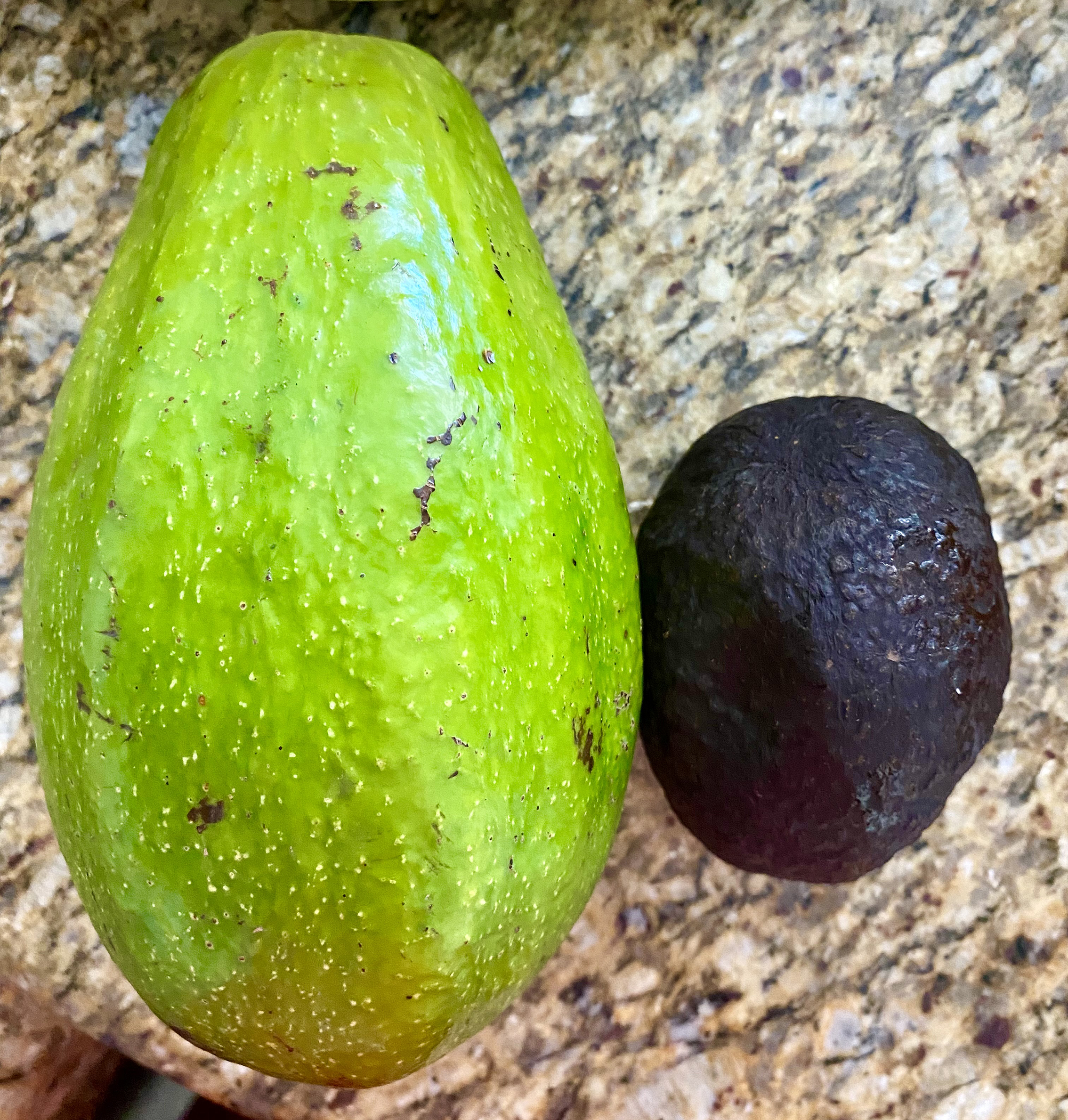![]() I can’t believe it took me so long to warm up to these ginormous tropical Yucatecan avocados but now that I’ve fallen in love with them there’s no turning back! Without a doubt Hass avocados take the prize as the most popular avocado fruit worldwide and found in just about every major city grocery store even if they aren’t locally grown anywhere close by. They’re easily recognized in stores and markets by their dark rough outer skin. These palm size fruits start out green & firm and quickly ripen with their skin darkening various shades of black and purple. Hass avocados have also gained quite a bit of a trendy cult following in the last few years with adorable avocado images found on everything from plush toys, t-shirts to hair clips!
I can’t believe it took me so long to warm up to these ginormous tropical Yucatecan avocados but now that I’ve fallen in love with them there’s no turning back! Without a doubt Hass avocados take the prize as the most popular avocado fruit worldwide and found in just about every major city grocery store even if they aren’t locally grown anywhere close by. They’re easily recognized in stores and markets by their dark rough outer skin. These palm size fruits start out green & firm and quickly ripen with their skin darkening various shades of black and purple. Hass avocados have also gained quite a bit of a trendy cult following in the last few years with adorable avocado images found on everything from plush toys, t-shirts to hair clips!
Locally here in Yucatan state tropical Yucatecan avocados grow in abundance which fortunately means for me I live in a place where I am surrounded by these gems. For the longest time I’d still pass over them at the local frutería produce markets here in Mexico and go straight for the Hass variety of avocados because it was what I was most familiar with. Most markets offer both types and I’m a girl who has always loved my avocados eating at least one half to a whole one a day so I was nervous to mess with a good thing. 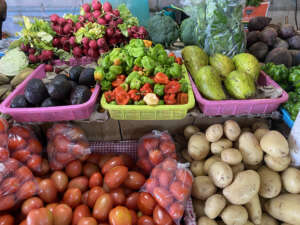
![]()
![]()
Over the years I had tried the local Yucatecan variety of avocado once or twice and was left a little unsure at first how I felt about them. Well let me tell you I’m so glad I recently gave them another chance because I’ve since fallen deeply in love! Yucatan avocados are similar to other avocados found in tropical regions such as Florida & Cuba. Even when ripe the skin of these large avocados remains green and soft. The skin is also quite thin in comparison to a Hass avocado which is very thick but the inside is delicious and creamy.
Here are a few reasons why I’m now thoroughly obsessed with these larger green avocados grown right here in Yucatan state!
1) Size
I love being able to just grab one or two nice large Yucatan avocados from the market to last me for the week instead of a whole bag of expensive Hass avocados that I’ll be anxiously waiting to see if I’ll catch them ripening in time. If I make guacamole with even just one half of a Yucatecan avocado it’s enough to share with a few people and the other half will keep well in the fridge until the next day.
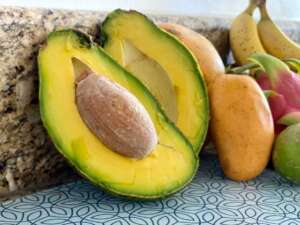 2) Cost
2) Cost
Right now Hass avocados can cost anywhere between $70-95 pesos per kg even here in Mexico. The Yucatan variety only costs around $25 pesos per kg. Yucatecan avocados are much larger so even when they equal to about 3-4 times the size of a Hass avocado they´re definitely worth switching for the price alone.
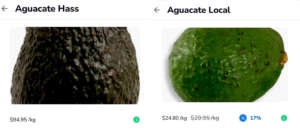
3) Easier to cut
Since tropical Yucatecan avocados have a very thin outer skin they’re super easy to cut into. I also find since the inner flesh is softer I can get all of the goodness out easier than cutting up a Hass avocado. I usually make a series of crisscross cuts and then can scoop it all out easily with a spoon. Since the consistency is more watery it’s also way easier to mash up just with a fork. I had spent years fighting with Hass avocados on a daily basis that if I didn’t catch them perfectly ripe they’re basically a nightmare to mash so anything that makes mommy meal prep quicker and easier makes me happy.
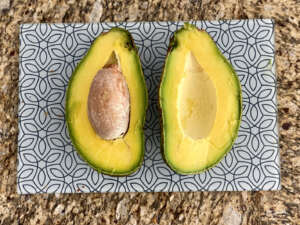
4) Taste
I find the Yucatan variety of avocados almost taste a little sweeter. The consistency is sort of creamy and a bit watery which actually makes it great for guacamole. I only really need to add half a lime (in contrast to sometimes needing a whole lime or two when I made guacamole with Hass avocados) and a touch of local pink sea salt and I instantly have a delicious snack.
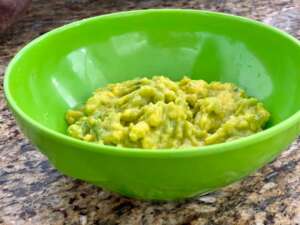
5) Longer shelf life
Coming from someone who had been a diehard Hass avocado consumer I always felt it was a delicate balance between getting a ripe avocado or one that seemed as if it would never turn. Often it felt as if there was no in between! Picking through them at the store felt as if they were ripe (or even too ripe) quickly going bad or hard little green rocks which seemed as if they’d never be able to be eaten. It’s much harder to pick a “bad” Yucatan avocado because their inside flesh is much softer making it ready to be eaten seemingly sooner but without turning quickly even when the outside begins to get brown spots.
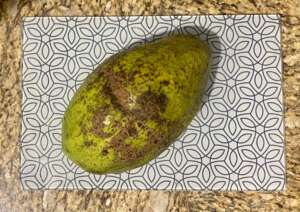
I realize not everyone reading this is going to have the option to run out and buy a Yucatan avocado to try but there are so many types of avocados out there. Next time you’re in your local grocery store or hit a market look for other varieties of avocados with light green skin that might be closely related to the Yucatan one I’ve fallen in love with. Or add a tropical avocado to your list of must try fruit for the next time you head to Mexico on vacation. There’s more than a dozen types of avocados and now that I’ve expanded my avocado loving palette I’m excited to try them all!

